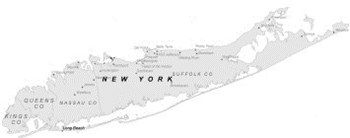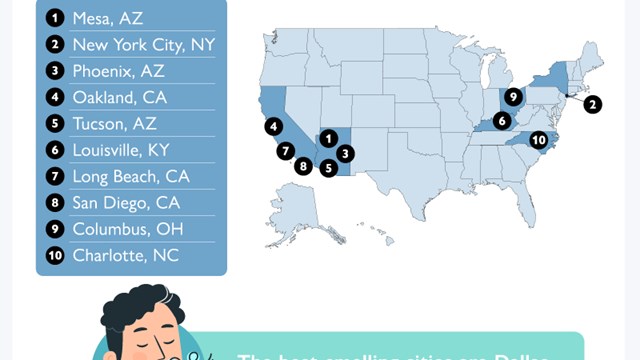
Condominiums can provide all of the advantages of traditional homes, as well as affording other benefits such as recreational facilities, group activities and close proximity to shopping and other destination points. But the quasi-municipal nature of a condominium community means that elected representatives and property managers can have a myriad of issues to deal with in managing the neighborhood. This often amounts to amateurs dealing with decisions that a professional might handle better. Even among professional property management companies, some managers are more educated in the industry and more actively involved in their communities than others.
Bridging the gap between the resident, the community and the town or borough where the community is located is part of the job of the Community Associations Institute (CAI), an organization devoted to education and advocacy for community associations across the nation.
CAI is a national organization dedicated to fostering vibrant, competent, harmonious community associations. For more than 30 years, CAI has been the leader in providing education and resources to the volunteer homeowners who govern community associations and the professionals who support them. Members include community association volunteer leaders, professional managers, community management firms, and other professionals and companies that provide products and services to associations. Currently, there are more than 50 nationwide chapters.
CAI introduces and advocates for HOA-friendly legislation and disseminates information to help boards and residents run their associations more effectively and efficiently. CAI's Long Island chapter helps HOAs and condo building communities to educate residents, elected leaders and managers. The group covers HOAs and condo building communities from the Hamptons to the borders of Brooklyn and Queens.
CAI Long Island's territory includes Nassau and Suffolk counties. Though the group's territory is sizable, its reputation and membership are still growing and could grow much larger, given the population of its territory. This young CAI chapter has just started, though, and it has grown fast in the short time that it has existed.
Meeting a Need
The Long Island chapter of CAI started with a handful of like-minded people who saw the benefits of working to organize a chapter of the national organization. The effort to form a CAI chapter began just two and a half years ago with a small group of people interested in the organization meeting and planning upcoming events together. The group planned and put on an April 2006 dinner that included speakers and which was quite successful, drawing 200 people, says Edward Taylor, president of CAI Long Island.
The Long Island group officially formed in October 2006, when its membership elected board members. Unlike other chapters that are larger and more established, CAI Long Island has no fixed location, but the group does have a post office box in Commack. Most of the group's meetings are held in a bank in Melville.
North Fork Bank has allowed the group to regularly use one its boardrooms for meetings, thanks to Peter Dumelle, a CAI Long Island member, vice president of business and professional banking at M&T Bank and former employee of North Fork Bank. Dumelle originally sponsored the group to enable it to meet at the bank, Taylor says.
While still relatively new, CAI Long Island now has 135 members, 35 of which are companies, and 100 of which are board members who join as individuals.
"We're a new organization, and when we started there were 30 members. Other than us, there's no real chance for board members to get any education, training or networking opportunities," Taylor says, adding that a large number of people in CAI Long Island's territory might benefit from the organization. "There's well over 1,000 communities in Nassau and Suffolk counties. Our task is to get more of those communities to join our organization. We need to get them to realize that what we have to offer could be a great benefit to them."
The task seems huge, given the potentially large numbers of members who might join the CAI chapter. But more fast growth in the group could be on the horizon, based on its success thus far. The Long Island group includes approximately 60 communities that belong to the association right now. Insofar as CAI Long Island was the brainchild of just a few people, then was formed by 30 people, and now has 135 members, more of such growth should probably be expected. The organization's leaders say they are hopeful.
Education and Networking
Dumelle's help was essential to forming the CAI chapter, but Taylor also was instrumental in starting the group. He has been a member of CAI for four years, having seen the value the organization some time ago because of his profession. Taylor is an attorney who represents boards and HOAs, and when he found out the CAI organization existed he wanted to become a part of it. He recognized that CAI would be a great benefit to his clients.
"Our purpose it to educate board members [of HOAs] and also to provide them with networking opportunities among themselves," Taylor says. "It's also a way for them to network with companies and experts who serve their communities."
Bob Plank, CAI Long Island's treasurer, and the vice-president of commercial lending at North Fork Bank, is also one of the founding members. Plank says he enjoys being a part of the group because of the positive effect that it has on people. People who come on as members appreciate the training and networking opportunities they are afforded through the group, Plank says. "It's a good networking group, but also a great community service and resource for the members… People should join for the resources they can get out of it," he says.
A few more key people recruited to join the ranks of CAI could make a lasting difference to the organization and the larger community, Plank says.
"The big thing is to get the word out. It's a matter of getting more people involved," Plank says. "Having more property managers and more HOAs join would help. If we could get a couple of really good property managers (with numerous communities in their management), it would triple our exposure and it would triple our membership."
Judging from the success of CAI Long Island's programs, that tripling of membership could happen soon.
Successful Programs
CAI Long Island recently hosted its first trade show, where 25 different vendors exhibited. Six different seminars were also offered for board members to attend. The event was well attended and well received, according to Taylor. Perhaps it was successful, in part, because community volunteers are people who tend to want to do a good job. But doing a good job as a board member isn't always easy to accomplish.
Regular turnover in boards is a fact of life, and of course that diversity in representation is the intent of the election process. But that same democratic mechanism which allows all voters to be heard often leads to inexperienced people taking the reins of a community's management. Rookie board members are bound to make mistakes, but their learning curve could be a shorter one with the right training, CAI officials say.
"It's kind of an ongoing education," Taylor explains. "Boards change and there's always a need for the new members to review."
Other legislative influences also could affect life in CAI Long Island's constituent communities, and HOAs need to know about those potential impacts, Taylor says. "There are some proposals before the state legislature that would take away condominiums' current tax status. We will be lobbying for the continuation of the lower tax rate," he says.
Some of the most tangible work that CAI Long Island does in the general community includes its educational programs. The organization hosts a quarterly seminar that includes a speaker and a question/answer session afterward. CAI Long Island has had seminars on preparing for a natural disaster, on what to look for in roofing and siding, a seminar on managing pools and seminars on other issues. The group will be addressing the issue of taxes in a future seminar, Taylor says.
Membership Has its Privileges
CAI Long Island leaders view their organization as an essentially helpful group meant to enable its members to better themselves. Membership in CAI Long Island enables members to tap into the resources of the national organization as well.
"When you join CAI, you become a member of the national organization and receive the benefits of that membership," Taylor says. "Those benefits include the resources available on CAI's website, as well as the organization's magazine. You also have access to the library of books that CAI has published, and other advantages."
CAI recently started a new member group to better serve its membership. The Center for Community Associations Volunteers provides information and support needed by community association volunteer leaders. The intent of the group is to help homeowners to become more effective leaders.
The national group also offers education courses to its members, as well as several newsletters that concern legislative trends and articles about community association finance, law and management. The organization regularly advocates for community association interests before various legislatures and courts. CAI's directory of credentialed professionals also is available to help members to locate qualified managers, attorneys, insurers and other professionals.
The national organization is well established and well known. But the Long Island chapter has a way to go before it reaches maturation. CAI Long Island officials say the biggest challenge facing them is the task of spreading the word about their group.
"It's a volunteer group. It's just a matter of slowly networking," Plank says. "It's a work in progress."
Jonathan Barnes is a Pittsburgh freelance writer, who regularly contributes to The Cooperator.






Leave a Comment